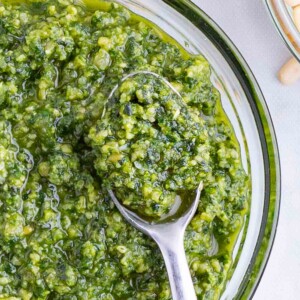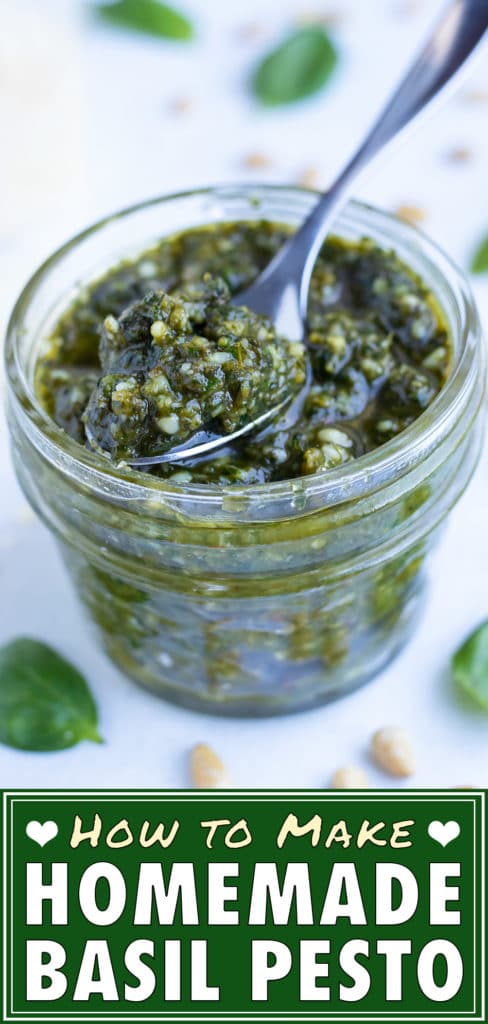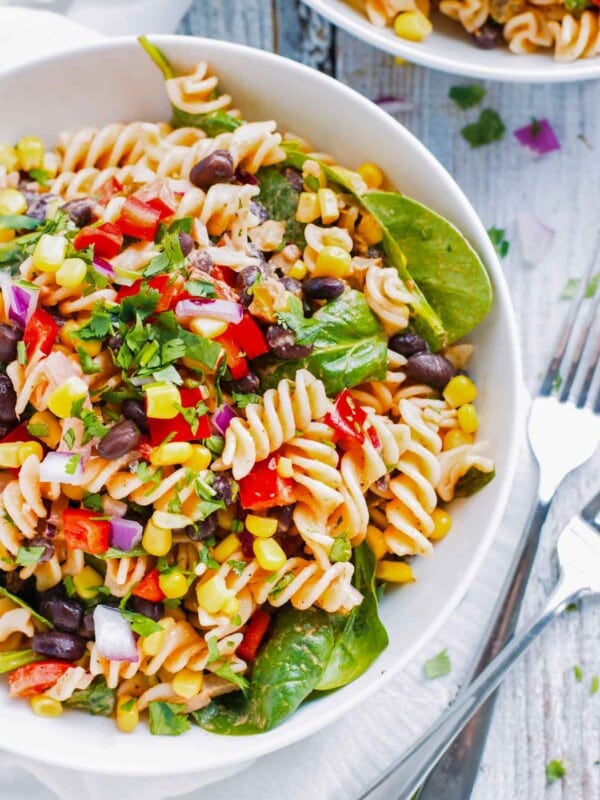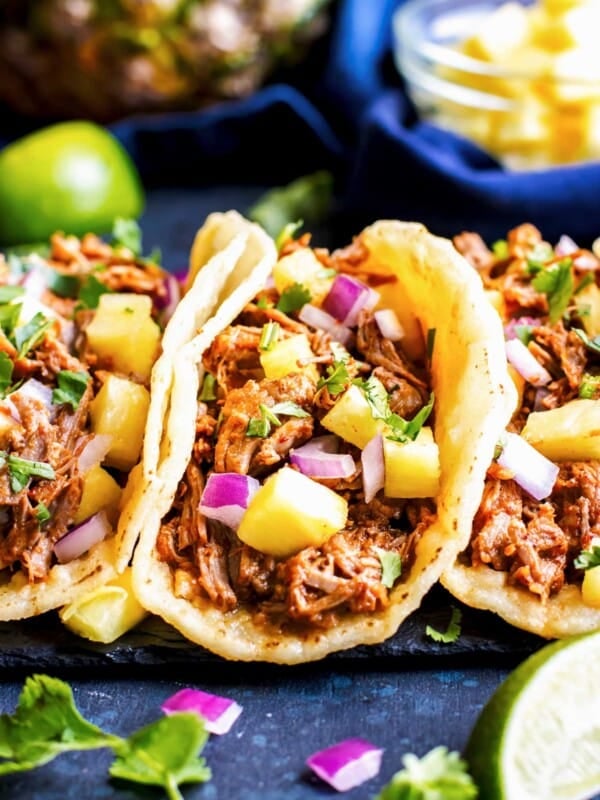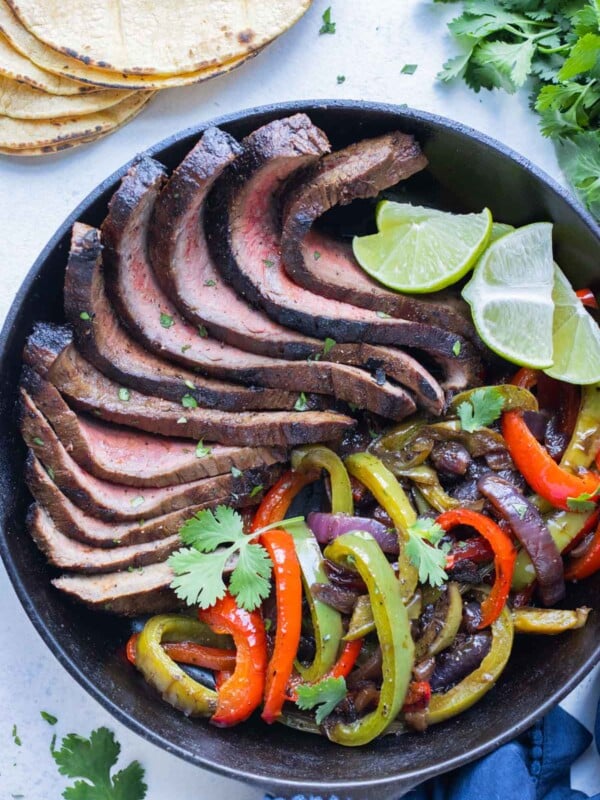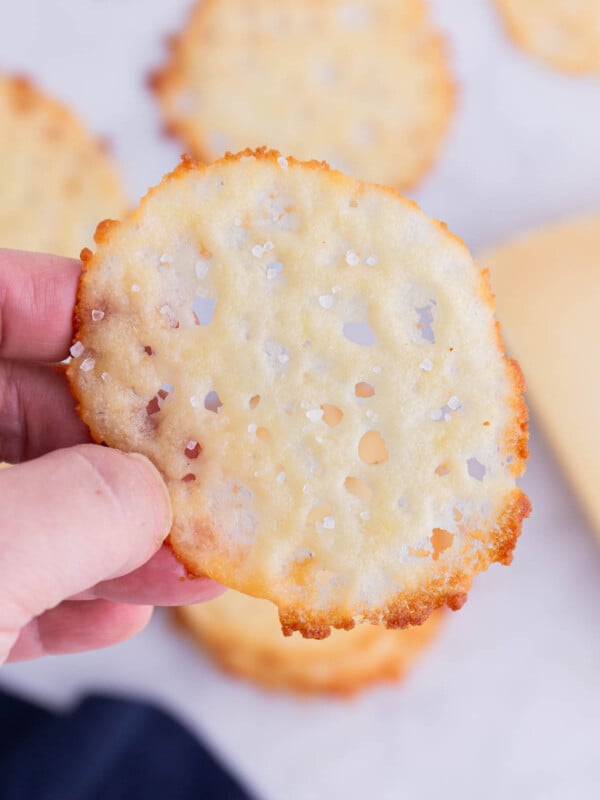This Homemade Basil Pesto Sauce has so much flavor, you’ll be putting it on everything! It’s so quick and easy to mix together fresh basil, pine nuts, Parmesan cheese, olive oil, and garlic for a delicious addition to so many dishes. What better way to use up all that extra basil from your home garden?
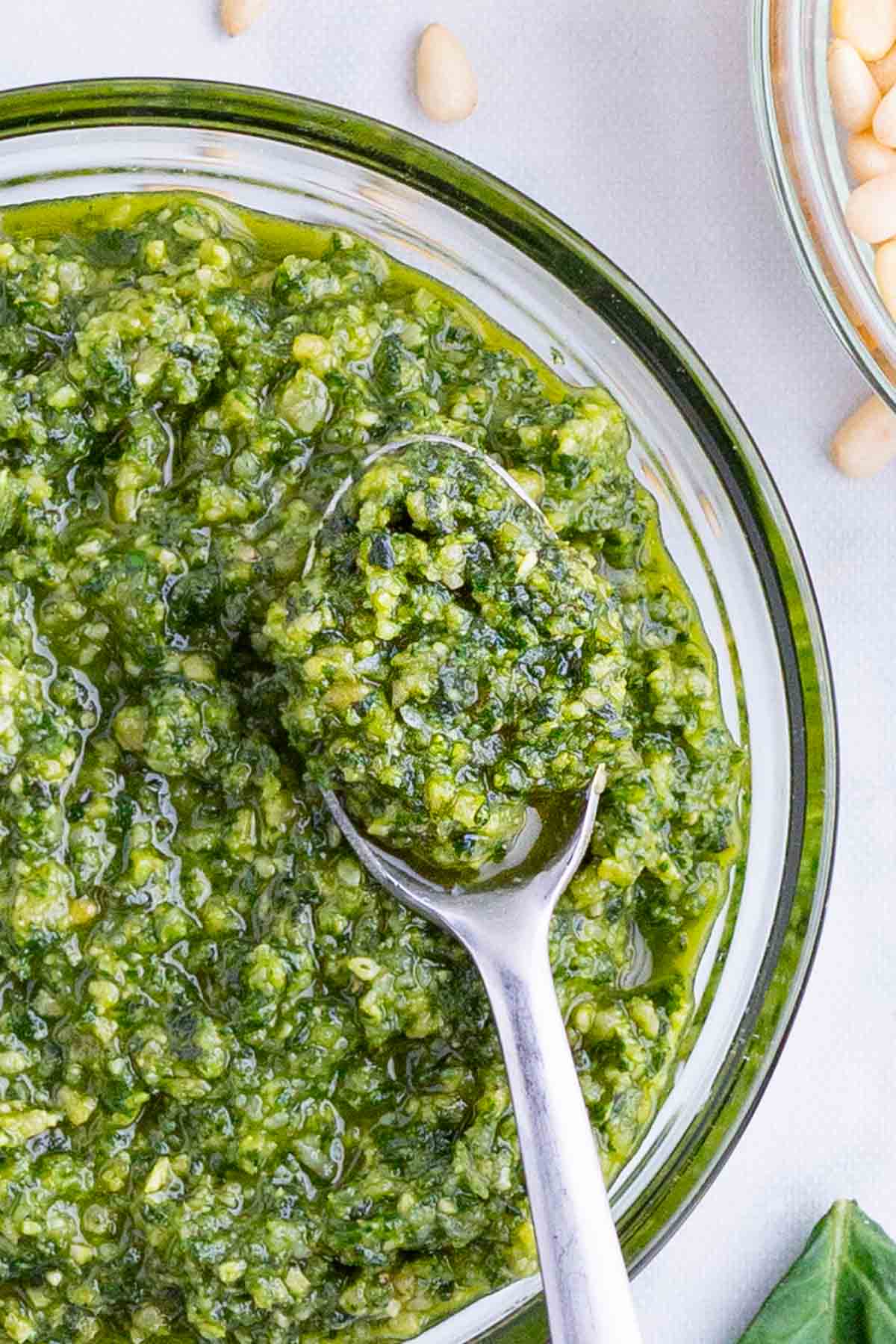
Table of Contents
- Simply Homemade Pesto
- Why our Basil Pesto Recipe Is the Best
- What is pesto made of?
- Ingredient Swaps: Do’s and Don’ts
- How to Make Basil Pesto in a Food Processor
- Pesto Flavor Variations
- How long can homemade pesto be stored?
- What’s the best way to prevent basil pesto sauce from turning brown?
- FAQs
- How to Use Basil Pesto Sauce
- Homemade Basil Pesto Sauce Recipe
Simply Homemade Pesto
It’s really no argument: I think we can ALL agree that homemade basil pesto sauce is clearly superior over store-bought.
It’s also the fastest way to use up a bunch of basil if you happen to be growing some in your summer garden or Aerogarden. (I admit- this is the only way I can grow fresh herbs at home!)
Once it’s made, it’s an easy and relatively healthy way to add a TON of flavor to so many dishes. I have used it in this creamy chicken pesto gnocchi, in this pesto risotto, and in this pesto shrimp pasta.
Why our Basil Pesto Recipe Is the Best
- We’re making our pesto in a food processor. The traditional way is with a mortar and pestle, but most households don’t have that tool, plus it takes WAY longer.
- You’ll find the perfect balance of oil to basil to cheese. (Definitely not too oily…!)
- Toasted pine nuts give extra flavor.
- By pulsing the ingredients in increments, you’ll guarantee the basil is finely chopped before adding the oil, creating an irresistible texture.
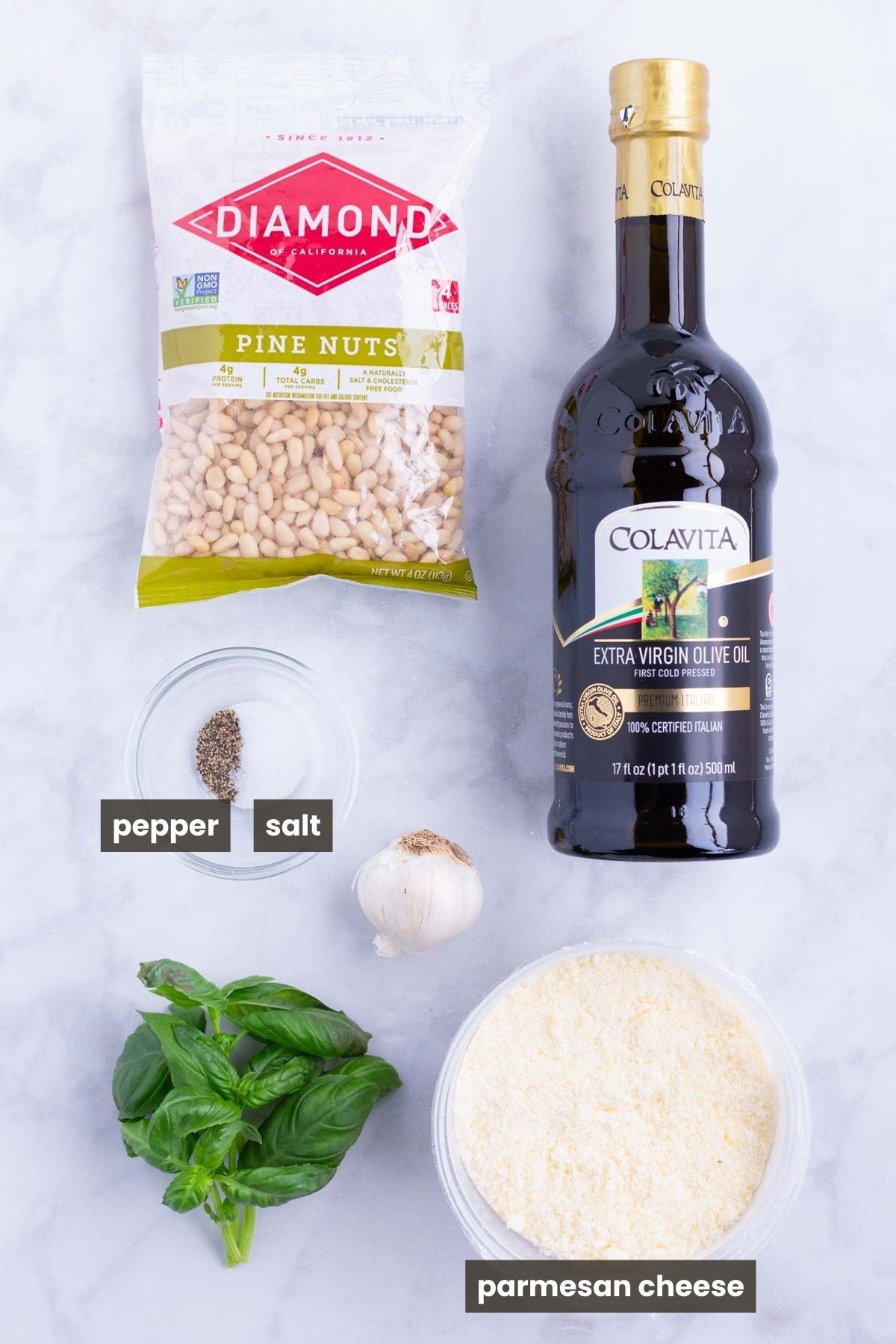
What is pesto made of?
- Basil. Fresh basil leaves make up the bulk of a homemade pesto recipe. You can either grow it in your own summer garden or purchase it in the produce section at your grocery store.
- Pine Nuts. Using these small, and somewhat pricey nuts, are the most authentic way to make pesto. If you’d like to save a little bit of money or have a difficult time locating them, you can always try using walnuts, pecans, or almonds, instead.
- Cheese. A hard cheese, such as a Parmiggiano Reggiano (also called Parmesan cheese in America) or Percorino cheese are the best types of cheese to use. When purchasing the cheese, make sure you get grated Parmesan cheese and not shredded for the best texture.
- Olive Oil. Since this makes up a large majority of the recipe, you’ll want to make sure you really love the taste and flavor of the oil you’re using. If you like it peppery, purchase an oil with more of an olive flavor.
- Garlic. Fresh garlic cloves give a wonderful punch of flavor to this sauce. I would not recommend substituting with garlic powder since it will give the pesto a more artificial flavor.
Ingredient Swaps: Do’s and Don’ts
- Can I substitute pine nuts with other nuts or seeds in basil pesto sauce? Yes! If you can’t find pine nuts you can sub in walnuts, almonds, or pecans.
- Can I make basil pesto sauce without garlic for a milder flavor? You can leave the garlic out if you’d like, or simply add less.
- Can I use a different type of cheese instead of Parmesan or Pecorino in basil pesto sauce? Try subbing in Asiago or Romano cheese for the closest flavor.
- Can I use dried basil instead of fresh basil in pesto sauce? Avoid subbing in dried basil as the amounts needed are different.
- Are there any variations of basil pesto sauce that are suitable for specific dietary restrictions, such as vegan or dairy-free options? Simply leave out the Parmesan cheese, or use a vegan-friendly option.
How to Make Basil Pesto in a Food Processor
Please see the recipe card below for ingredient amounts and more detailed instructions.
1. Process the Basil, Pine Nuts, and Garlic
The most important thing to remember when making this pesto is to go in the right order. Starting with the basil allows it to break down before adding everything else.
You can use a blender or food processor, but my recommendation is to use a food processor with a hole at the top. This hole will enable you to slowly drizzle in the olive oil while blending the pesto together. Both the hole and the pulsing ability will allow you to have the most control over the finished texture of your pesto.
Add the basil leaves that have been separated from the stems to a food processor bowl along with the pine nuts and garlic. Pulse the ingredients 20 to 30 times, just until the basil is finely chopped.
Note, you can use a high-speed blender, but it’s harder to control and you could end up pulverizing it, resulting in an overly dark pesto sauce.
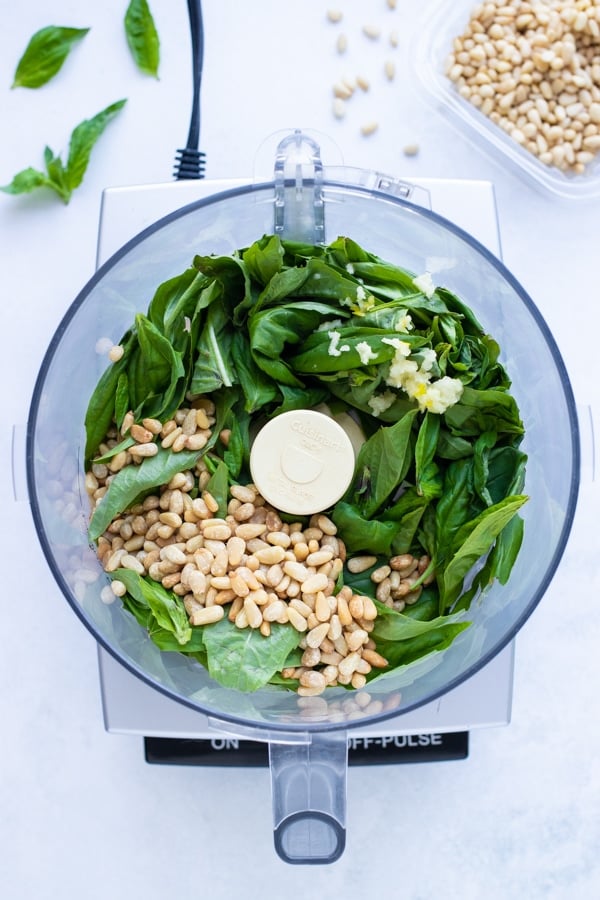
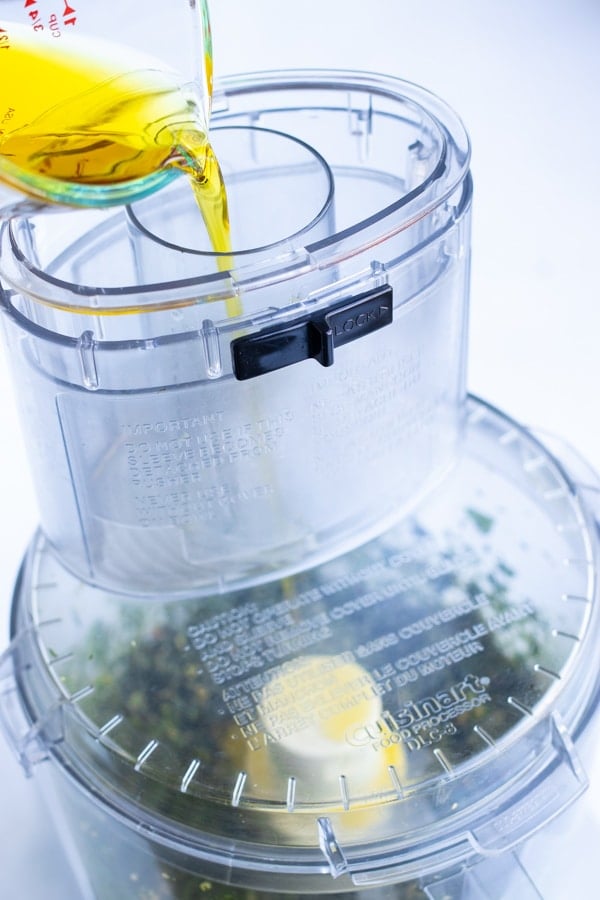
2. Add Remaining Ingredients
After you have pulsed the first three ingredients, turn on the food processor and slowly drizzle in the olive oil.
Then, add the Parmesan cheese, salt, and pepper. Pulse until the sauce just comes together and reaches your desired consistency.
3. Serve Pesto
This pesto is best served immediately. If needed, you can store it briefly in the fridge after covering it tightly with plastic wrap.
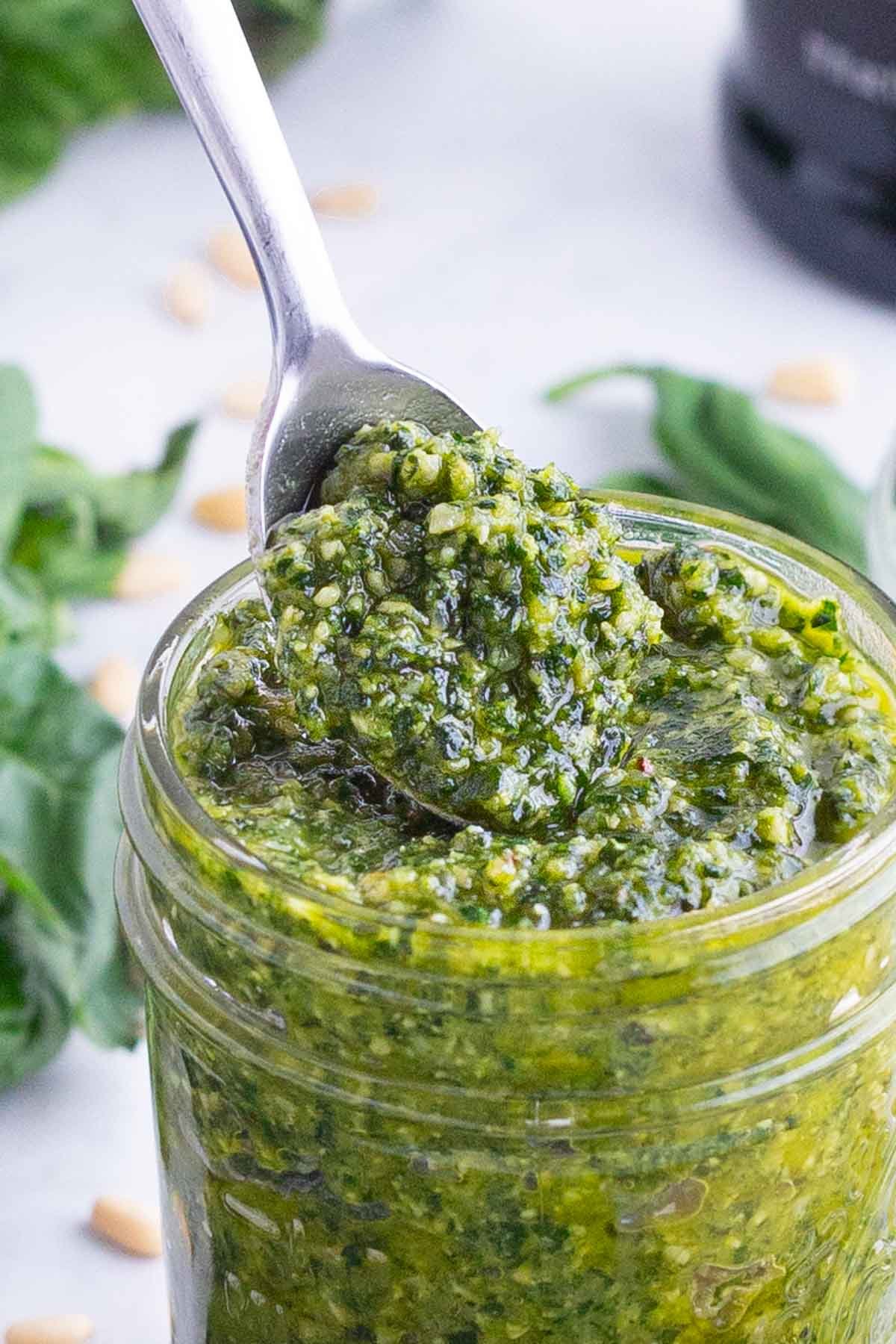
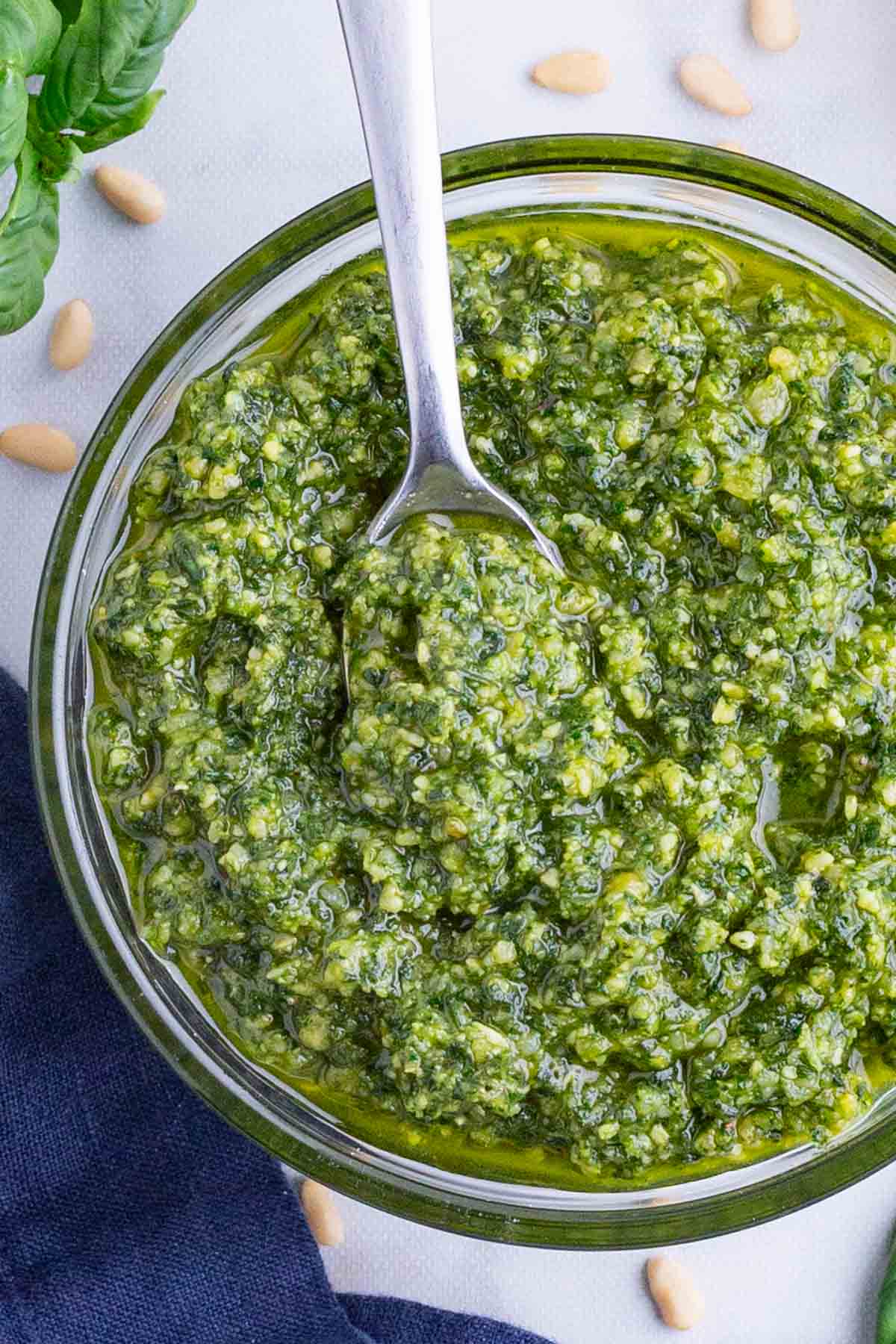
Pesto Flavor Variations
While traditional pesto is delicious, don’t shy away from these unique and enticing variations.
You can’t go wrong adding sun-dried tomatoes or roasted red peppers. You can also add a fresh kick with some lemon zest.
Or, try adding in some cilantro or even kale!
How long can homemade pesto be stored?
Homemade pesto can be stored in an airtight container for up to a week. It will also last up to 6 months in the freezer. A great way to freeze basil pesto is to place it in 1-tablespoon increments into an ice cube tray. Freeze for 2-4 hours, or until firm, and then place the cubes into a gallon-sized storage bag. When you need a little pesto flavor in your favorite soups, stews, or pasta sauces, simply grab a cube and pop it into your dish!
What’s the best way to prevent basil pesto sauce from turning brown?
To prevent basil pesto from browning, don’t overprocess it, then cover it tightly with plastic wrap when storing.
FAQs
If the basil is too thin, incorporate some more basil or pine nuts. If it’s too thick, simply drizzle in some extra olive oil.
If your pesto is a little bitter, simply include some acid, like lemon juice or zest. You can also try a little bit of salt.
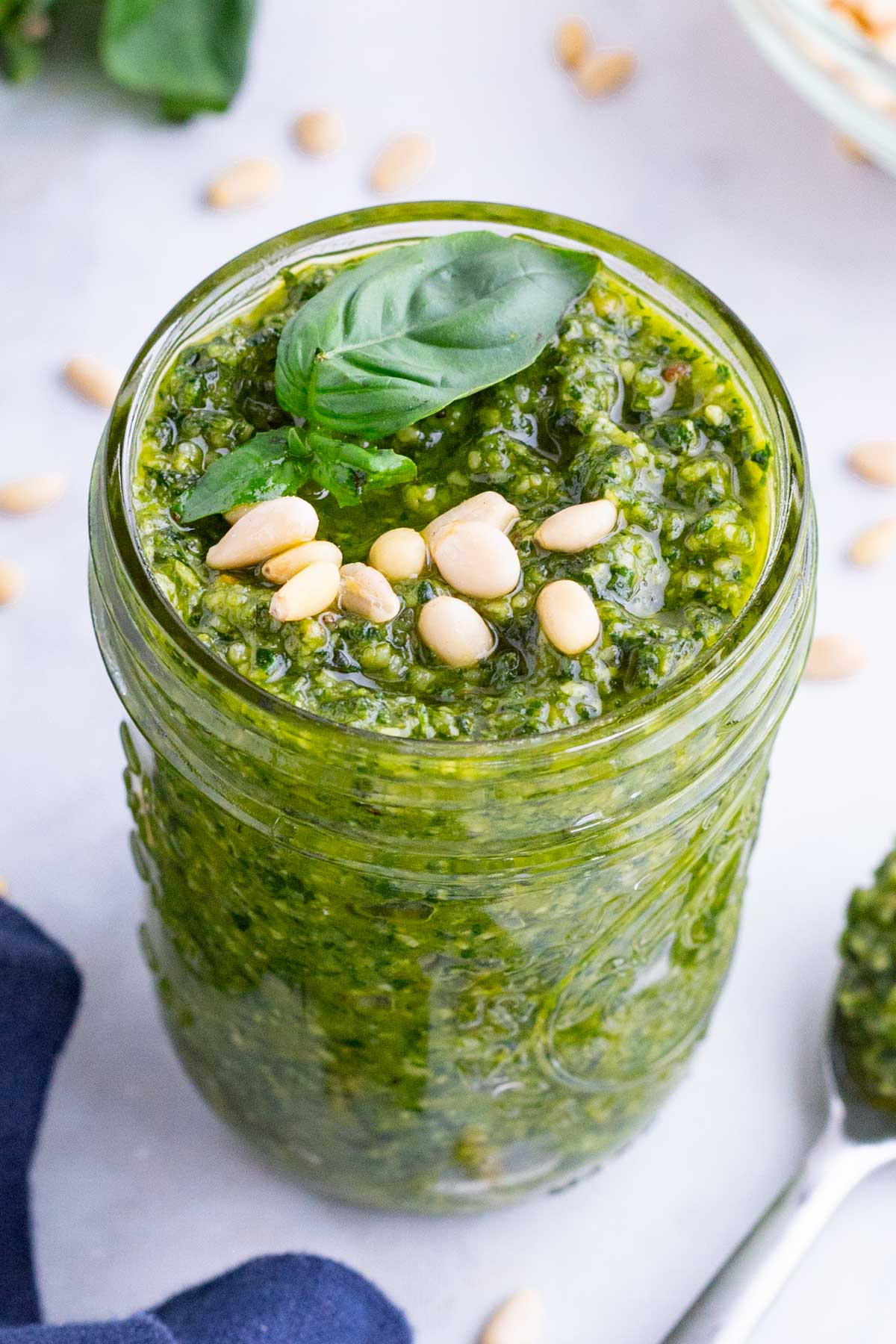
How to Use Basil Pesto Sauce
After you’ve made up some of your own pesto, try it in any of these recipes for a real treat.
Tap stars to rate!
Email this recipe!
Ingredients
Instructions
- Place basil leaves, pine nuts and garlic in a large food processor. Pulse 20-30 times or until basil is finely chopped.2 cups basil, ⅓ cup pine nuts, 2 cloves garlic
- Turn the food processor on and slowly drizzle in the olive oil.½ cup olive oil
- Add the Parmesan cheese, salt, and pepper. Pulse until just combined and your desired consistency is reached.½ cup Parmesan cheese, ¼ tsp. salt, Pinch of black pepper
- Serve pesto immediately or store covered with a piece of plastic wrap in an airtight container in the refrigerator for up to a week.
Tap stars to rate!
Notes
- This recipe makes ~¾-cup of pesto. 1 serving is 1 tablespoon of pesto.
- Parmiggiano-Regiano and Pecorino can be used interchangeably.
- Walnuts, pecans, or almonds can be substituted for the pine nuts, if desired.
Nutrition
Nutrition information is automatically calculated, so should only be used as an approximation.
